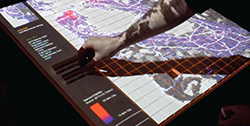“Density is the main driver of complexity when it comes to urban last-mile distribution,” said MIT's Matthias Winkenbach during a recent talk at U.S. DOT’s Volpe Center.
And new technologies mean customer expectations are changing, with more expectations of speed, flexibility, transparency, and reliability in last-mile deliveries, without having to pay more.
“What will be the impact of, say, autonomous trucks circling through a city without stopping, to move closer to where demand will occur within the next few minutes, to continually minimize difference between inventory and customer?” Winkenbach said. “This research is extremely data intensive, and it is difficult to efficiently route in highly congested and uncertain environments.”
High-resolution transactional data is key to understanding the true complexity and stochasticity of urban operations, Winkenbach said. Movement data is key, especially GPS data coupled with cell phone data, to triangulate where vehicles actually move. With high-resolution data, companies and planners can figure out where drivers park, and plan based on those patterns.
But there is no one-size fits all solution.
“No city is the same and within a city we don’t see two areas that are the same—you have to learn from previous delivery processes to become more efficient,” Winkenbach said. “We can build fancy models but if policy makers and companies don’t understand them, they have no impact.”
 That’s why Winkenbach and his colleagues use physical, visual interfaces to help policy makers find signals within the noise. In San Francisco, the team used a projected display of the city on an electronic board. Decision makers were given Lego bricks representing distribution centers, which they could plug into the board to see how the placement of those centers would affect traffic flow.
That’s why Winkenbach and his colleagues use physical, visual interfaces to help policy makers find signals within the noise. In San Francisco, the team used a projected display of the city on an electronic board. Decision makers were given Lego bricks representing distribution centers, which they could plug into the board to see how the placement of those centers would affect traffic flow.
“We’ve got to talk about highly analytical problems, like last mile-distribution networks, in the same way and intuitively, because you often have multidisciplinary teams making decisions,” Winkenbach said.